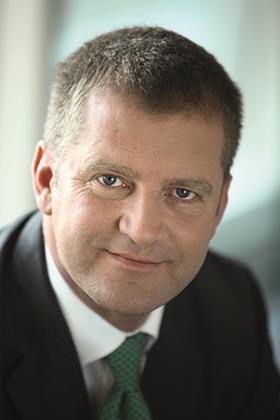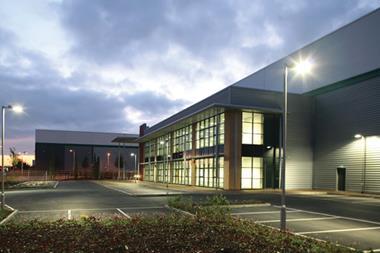I am writing this on my hundredth day as president of Prologis Europe, getting better acquainted with our teams and a portfolio that encompasses 16.4m sq m (176.5m sq ft) in 13 countries.

It has been an invigorating few months. Thankfully, I am helped by the fact that the company is in great shape and very stable, with no major strategic changes to implement.
We are now in the final year of Vision 2016, the business plan we embarked on after the Prologis/AMB merger five years ago. We have spent those years getting our European platform into the core markets and improving operational performance, and now we continue to fine-tune. The big markets for us remain the UK, France, Germany and Poland, and they will be where most of our euros are invested. However, we continue to take advantage of good opportunities in other markets such as Spain, Italy and the Czech Republic.
The UK is by far the strongest market at present, being the most mature and the most transparent, with a well-established ecommerce sector that has been a big boost for our business. This year, our focus in Europe will continue to be about retaining the historically high level of occupancy across our portfolio and growing the business through development. At the end of 2015, our occupancy hit a record high of 95.8%. Our 35 development starts totalled 745,500 sq m.
We are still in the market to make investment acquisitions in our core markets, although we see fewer opportunities for large acquisitions this year. We see development opportunities right across Europe, mainly in the automotive and retail sectors, driven by supply chain reconfiguration. Ecommerce is still the largest new demand driver, and we anticipate demand for an additional 15m sq m over the next five years. Customer sentiment is on the rise in central, eastern and southern Europe, while the UK and northern European markets remain strong.
Speculative development is increasing, accounting for around 35% of total development starts, although we maintain our careful and measured approach. This share remains well below the peak levels last seen in 2007, and is concentrated in the UK and northern Europe, where close to 70% of the developments were started. Our efforts remain focused on working closely with customers on build-to-suit projects, such as the 118,000 sq m facility for BMW in Germany. However, in supply-constrained markets, where we have prime sites, we will continue to develop speculatively, although that development will be conservative and cautious.
In addition, we will continue to have an active disposal programme. Each year, we typically look to dispose of 2%-3% of our portfolio as standard practice. We recently closed on the sale of a number of assets in Spain and the UK, and we expect to follow up with further disposals in the coming months.
In a sustained low-interest rate environment, capital interest in logistics real estate remains strong. The strengthening of operating fundamentals and structural drivers of demand, supported by low interest rates, resulted in a significant increase in available equity for the asset class in 2014 and 2015. This is evident in INREV’s investment intention survey, which shows that 59% of investors are targeting logistics in 2016, compared with 27% in 2012. Consequently, supported by limited opportunities for core product, we believe cap rates could potentially compress a further 25-50 basis points in 2016.
Europe will face social and political challenges in 2016. However, the economy has shown remarkable resilience, thanks largely to domestic demand. With continued economic growth, strengthening customer sentiment and good operating fundamentals, our outlook is positive for logistics real estate this year.
Ben Bannatyne is president of Prologis Europe




























No comments yet